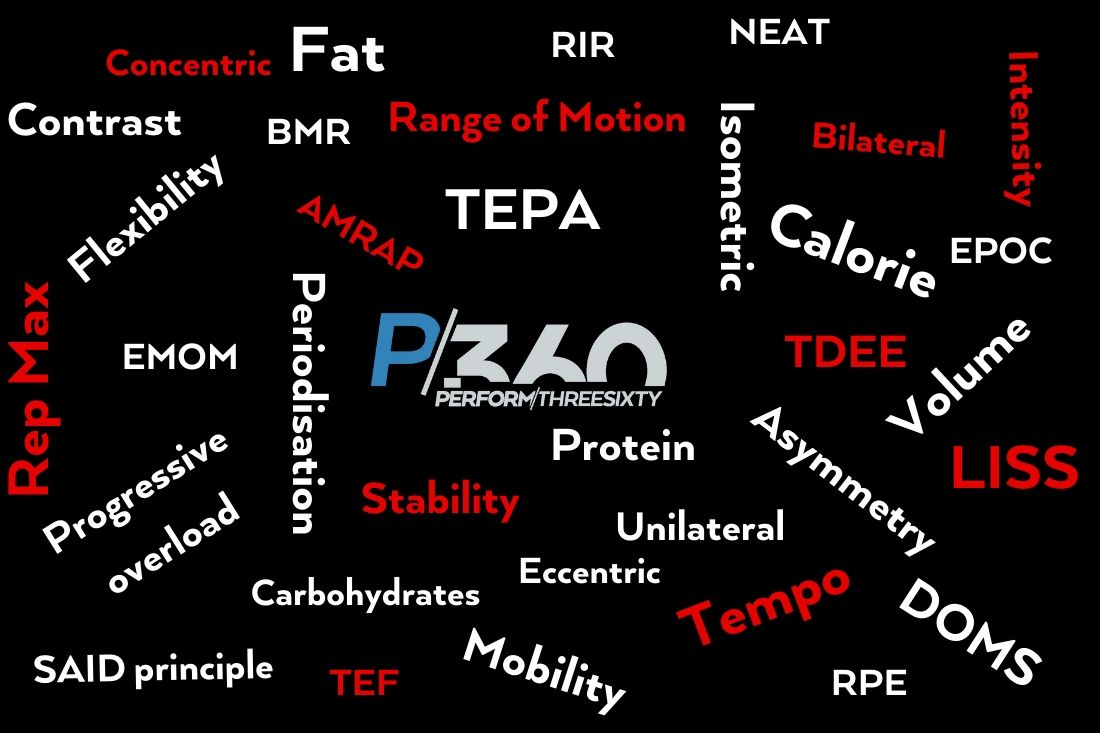With so many health and fitness terms and acronyms out there…we wanted to share some of the terms/jargons we use within our community and programs. Here’s the first instalment.
Chapter One
Periodisation: This refers to the structure of your training. A good training program implements periodisation that will take the athlete through different cycles of training. This will be aimed at producing the best performance at a certain time, for instance a competition meet or season. Different phases of the training program can include hypertrophy, strength, power, maintenance and recovery/ rehabilitation. A good program will see the athlete hitting peak performance at the time of competition when they need it the most. A Macrocycle encompasses a whole year (Or an entire training season), and will outline broadly what the years training looks like. A Mesocycle or block (Phase) can usually last between four and eight weeks. A Microcycle is the shortest plan and usually lasts a week. The microcycle (1 week) will facilitate the outcome of the mesocycle (4-8 weeks).
Eccentric: Eccentric contraction is the lengthening phase of the muscle contraction. Eccentric training is very important for building strength and stability. Eccentric training is crucial for sports that employ sprinting, jumping and changes of direction. Eccentric strength is also crucial for braking or deceleration. Eccentric strength may be anywhere as high as 40 percent more than concentric strength.
Concentric: Concentric contraction is the shortening phase of the muscle contraction. Concentric contraction builds strength, stability and maximum strength. (A 1RM is a measure of the highest load that can be lifted concentrically).
Isometric: Isometric contraction is muscle tension is created without shortening or lengthening of the muscle. Isometric strength can be up to 20 percent greater than concentric strength. Isometric strength would be used in martial arts/ combat sports, baseball, cricket, motor sports and any other sport where the athlete is required to hold in a position for an extended period.
Bilateral: Bilateral movement refers to the ability to utilise the left and the right sides of the body at the same time. to go one step further, bilateral symmetry would be to be able to apply equal force, stability or output on both sides of the body at the same time. Bilateral exercises include squatting, deadlifting, bench press, nordic curls and many others where left and right are required to work with and support one another.
Unilateral: Unilateral exercises are those that isolate a single limb. This will build coordination, stability and strength in a single limb (which in turn will build all of these functions in bilateral movement). Unilateral exercises may include single leg RDL, step ups, pistol squats and rear foot elevated split squats for lower body. Upper body exercises may include single arm DB row, single arm DB bench press and a half kneeling DB shoulder press. Unilateral exercises should be a very important part of your training.
Asymmetry: Asymmetry in the body can occur for any number of reasons. This means there is an imbalance or something is not equal within the body. This can be genetic, brought on through injury or developed over years of training or playing certain sports. Sports where an asymmetry may occur are baseball, cricket, soccer and tennis. Training can be done to balance asymmetry out. Single leg RDL, chaos carries, single arm bottom up KB press and single arm farmers carry can all be used to create balance in an athlete.
Progressive overload: Progressive overload is a principle that states the body must continue to be put under new and increased exposure to stress/ load in order for it to adapt and grow. This means to see improvement in strength, fitness or muscle growth we must continually stimulate ourselves beyond what we have previously experienced.
Specific Adaptation to Imposed Demands (SAID principle): The body’s ability to adapt to specific demand or stress upon it. This principle suggests athletes training for specific sports should train movements that mirror those used in the sport. This allows the body/ physiological stressors to adapt to those movements and to provide the best results. Different aerobic systems, contraction, movements and a whole array of other things might contribute to the athlete having a less than optimal performance. Some examples would be a soccer player playing basketball. While there will be many carry overs and a good athlete will look the part, the specific requirements/ movements of the other sport will place stress on the athlete in due course. Another example would be an athlete that trains pull ups/ chin ups, while they may be strong at these movements, that would not necessarily carry over to rock climbing/ rope climbs.


